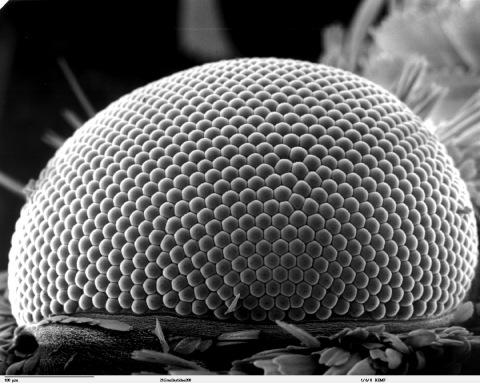An international team of physicists has developed new nanoscale materials that could someday reduce the radiation dosages caused by X-rays, while also improving the resolution of the resulting images. The material was inspired by moth eyes, which are remarkably anti-reflective.
The material consists of a film, just 500 nanometers thick, made of crystals encrusted with silicon nitride protuberances. Each protuberance was modeled after the structures in a moth’s eye and is designed to extract more light from the film. The material improves the efficiency with which the scintillator converts X-rays to light by as much as 175 percent.
